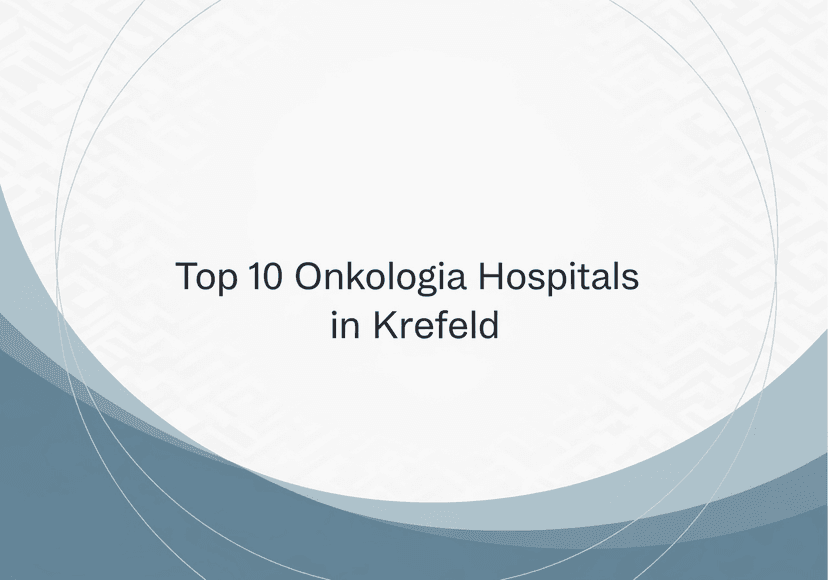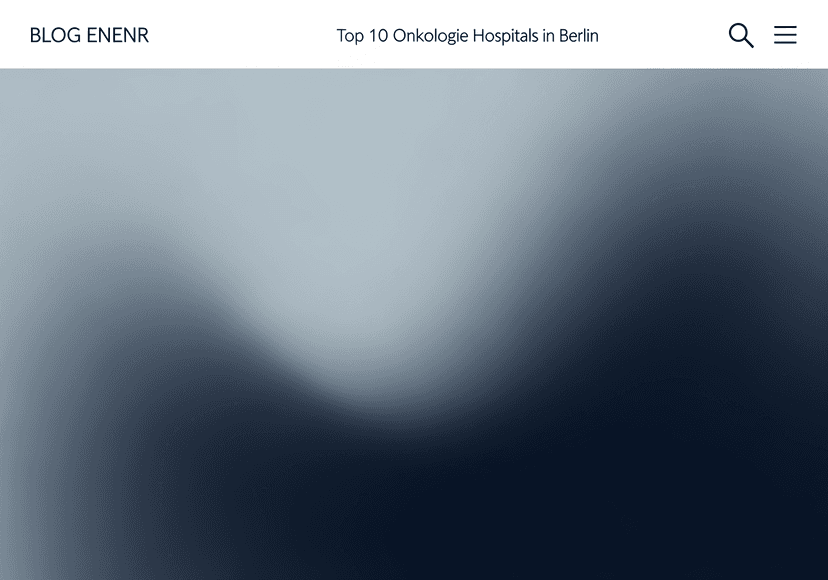
Genomic Profiling: Personalized Breast Cancer Treatment in the UAE
02 Nov, 2023
 Healthtrip
HealthtripIntroduction
Breast cancer is a formidable foe that affects countless women worldwide, and the United Arab Emirates (UAE) is no exception. The battle against breast cancer has seen significant progress over the years, with advancements in early detection and treatment modalities. One of the most promising developments in this fight is the integration of genomic profiling, which has the potential to revolutionize breast cancer treatment by tailoring therapies to an individual's unique genetic makeup. In this blog, we will explore the significance of genomic profiling in personalized breast cancer treatment in the UAE, discussing its importance, the science behind it, and its impact on patient outcomes.
Understanding Genomic Profiling
Genomic profiling, often referred to as molecular profiling, is a cutting-edge approach that examines the genetic makeup of cancer cells. This innovative technology allows oncologists to delve deep into the unique genetic alterations within a patient's tumor, uncovering valuable insights that can guide treatment decisions. Genomic profiling involves the analysis of an individual's DNA, RNA, and protein profiles, which collectively provide a comprehensive picture of the tumor's characteristics and behavior.
Most popular procedures in India
Genomic Profiling Procedure
Step 1: Patient Evaluation
- Patient Assessment: The process begins with the patient's initial evaluation, including a thorough medical history, physical examination, and reviewing the patient's prior medical records and diagnostic tests.
Step 2: Informed Consent
- Informed Consent: The patient is informed about genomic profiling, its purpose, potential benefits, and any associated risks. The patient must provide informed consent before proceeding with the procedure.
Step 3: Tissue Sample Collection
- Tissue Sample Collection: A biopsy or surgical excision is performed to obtain a sample of the breast tumor tissue. This sample is crucial for genomic profiling.
Step 4: Sample Processing
- Tissue Processing: The collected tissue sample is processed to isolate the DNA, RNA, and proteins. The quality of the sample is critical to ensure accurate profiling.
Step 5: Genomic Profiling
- Genomic Profiling: The isolated DNA, RNA, and proteins are subjected to various genomic profiling techniques, which may include:
- Sequencing: DNA and RNA sequencing to identify genetic mutations and alterations.
- Microarray Analysis: Examining gene expression patterns.
- Proteomics Analysis: Identifying specific proteins and their abundance.
- Immunohistochemistry: Identifying protein markers in the tumor tissue.
Step 6: Data Analysis
- Data Analysis: The data generated through genomic profiling are analyzed to identify genetic alterations, mutations, and other relevant information. Bioinformatics tools and expertise are essential in this phase.
Step 7: Interpretation
- Interpretation: Oncologists and geneticists interpret the genomic data to understand the specific genetic characteristics of the patient's tumor. They identify targetable mutations and potential treatment options.
Step 8: Treatment Planning
- Treatment Planning: Based on the findings from genomic profiling, the medical team develops a personalized treatment plan. This plan may include targeted therapies, immunotherapies, chemotherapy, surgery, or a combination of these modalities.
Step 9: Treatment Administration
- Treatment Administration: The patient begins the recommended treatment plan. The healthcare team monitors the patient's response to therapy and makes adjustments as necessary.
Step 10: Follow-up and Monitoring
- Follow-up and Monitoring: The patient's progress is closely monitored, and additional genomic profiling may be performed to assess treatment response and any changes in the tumor's genetic makeup over time.
Step 11: Patient Support
- Patient Support: Patients receive psychological and emotional support, as breast cancer treatment can be physically and emotionally challenging. Support groups and counseling services are often available.
Step 12: Ongoing Research
- Ongoing Research: Data collected through genomic profiling contribute to ongoing breast cancer research and the development of new treatment strategies. The healthcare institution may participate in research collaborations.
The Importance of Genomic Profiling in Breast Cancer
Breast cancer is a complex and heterogeneous disease, with multiple subtypes that respond differently to various treatments. Genomic profiling has emerged as a game-changing tool in the fight against breast cancer, offering personalized treatment strategies based on the genetic makeup of individual tumors. This article delves into the crucial importance of genomic profiling in breast cancer diagnosis and treatment, shedding light on how it is revolutionizing the approach to this prevalent and challenging disease.
Wellness Treatments
Give yourself the time to relax
Lowest Prices Guaranteed!

Lowest Prices Guaranteed!
1. Personalized Treatment Strategies
Genomic profiling allows for the customization of treatment plans by identifying specific genetic alterations within a patient's tumor. This tailoring of therapy is a stark departure from the traditional one-size-fits-all approach to breast cancer treatment. By understanding the unique genetic landscape of a tumor, oncologists can select treatment options that are more likely to be effective for a particular patient, thereby improving outcomes and reducing unnecessary side effects.
2. Targeted Therapies
One of the key benefits of genomic profiling is the ability to identify specific genetic mutations or alterations within a tumor. Armed with this information, healthcare providers can choose targeted therapies that focus on the underlying molecular drivers of the cancer. Targeted therapies are often more effective and cause fewer side effects than broad-spectrum treatments like chemotherapy. Genomic profiling transforms breast cancer treatment into a precision medicine approach.
3. Avoiding Ineffective Treatments
Not all breast cancer treatments are equally effective for every patient. Genomic profiling helps identify treatments that are unlikely to work, sparing patients from the physical and financial burdens of ineffective therapies. This avoids the trial-and-error approach, allowing patients to receive treatments with a higher likelihood of success right from the start.
4. Monitoring and Prognosis
Genomic profiling doesn't stop at the initial diagnosis. It provides an invaluable tool for monitoring a tumor's evolution over time. By tracking the genetic changes within the tumor, healthcare providers can adjust the treatment plan as necessary, ensuring that it remains effective. Additionally, genomic profiling can provide insights into the tumor's prognosis, helping both patients and physicians make informed decisions about the future course of treatment.
5. Tailoring Breast Cancer Treatment in a Multifaceted Disease
Breast cancer is not a singular entity but a multifaceted disease comprising various subtypes, each with distinct genetic profiles and behaviors. Genomic profiling is indispensable in identifying these differences and choosing the most appropriate treatment for each subtype. It also plays a crucial role in identifying rare or unique genetic alterations, guiding the development of novel therapies for previously untreatable cases.
6. Research Advancements
Genomic profiling contributes significantly to breast cancer research. The data collected from these profiles are invaluable for ongoing studies aimed at better understanding the disease and its underlying mechanisms. This research not only fuels the development of more effective treatments but also enhances our understanding of breast cancer prevention and early detection.
Genomic Profiling in the UAE
The United Arab Emirates (UAE) is making significant strides in the field of genomics, and the integration of genomic profiling for various medical applications, including breast cancer, is becoming increasingly prominent. In this article, we explore the status of genomic profiling in the UAE, highlighting the country's commitment to advanced medical practices and personalized healthcare.
1. Commitment to Cutting-Edge Healthcare
The UAE has long been known for its commitment to embracing cutting-edge medical technologies and practices. This commitment extends to genomic profiling, a groundbreaking approach that offers a deeper understanding of genetic aspects related to various diseases, including breast cancer.
2. Multidisciplinary Approach to Healthcare
The UAE's healthcare system promotes a multidisciplinary approach to cancer care, where healthcare providers, including oncologists, geneticists, and pathologists, collaborate closely to ensure comprehensive genomic profiling. This teamwork facilitates the collection and interpretation of data critical for tailoring treatment plans for breast cancer patients.
3. Access to State-of-the-Art Facilities
Patients in the UAE have access to state-of-the-art medical facilities and services, which ensures that genomic profiling is readily available to those in need. The availability of such advanced technology contributes to the precision of diagnosis and personalized treatment strategies.
4. Collaborative Research Initiatives
The UAE actively participates in international research collaborations focused on the applications of genomics in healthcare. These collaborations involve partnerships with renowned medical institutions and researchers, contributing to the advancement of breast cancer treatment strategies that incorporate genomic profiling.
Case Study: Personalized Medicine in Action
Let's delve into a real-life case study that demonstrates the transformative impact of personalized medicine through genomic profiling in breast cancer treatment.
1. Patient Profile
Name: Sarah Age: 43 Medical History: Sarah had recently been diagnosed with an aggressive form of triple-negative breast cancer. Given the aggressive nature of the cancer and the limited treatment options, her prognosis appeared challenging.
2. Initial Treatment Dilemma
Upon diagnosis, Sarah's medical team faced a difficult treatment decision. Triple-negative breast cancer is known for being more resistant to conventional therapies, making it particularly challenging to treat. The standard treatment options, including surgery, chemotherapy, and radiation, were discussed, but the chances of success were uncertain.
3. Genomic Profiling
The oncologist, aware of the potential benefits of genomic profiling, recommended that Sarah undergo this advanced diagnostic procedure. Sarah was intrigued by the prospect of a treatment plan tailored to her unique genetic makeup and gave her informed consent for genomic profiling.
4. Genomic Profiling Results
Sarah's tumor tissue sample underwent genomic profiling, revealing a specific genetic alteration that increased the expression of a certain protein known as PD-L1. This information was crucial as it indicated a potential target for immunotherapy.
5. Personalized Treatment Plan
Armed with the results of the genomic profiling, Sarah's medical team crafted a personalized treatment plan:
- Immunotherapy: Given the high expression of PD-L1, Sarah's oncologist recommended an immunotherapy drug designed to block the interaction between PD-L1 and the patient's immune system, thereby allowing the immune system to recognize and attack the cancer cells more effectively.
- Chemotherapy: Sarah was also prescribed chemotherapy, but the choice of chemotherapy drugs was influenced by her genomic profile. The oncologist selected a regimen with the highest likelihood of synergy with the immunotherapy.
- Radiation Therapy: Sarah's treatment plan included radiation therapy to address the localized tumor.
6. Treatment Progress
Sarah began her personalized treatment plan, and the results were nothing short of remarkable. She experienced significantly fewer side effects compared to her previous treatment, and her overall quality of life improved. Moreover, her tumor responded favorably to the treatment, shrinking in size.
7. Follow-up Genomic Profiling
To monitor Sarah's progress and the tumor's genetic changes, the medical team conducted follow-up genomic profiling at regular intervals. This information allowed them to adapt the treatment plan as needed to ensure its continued effectiveness.
8. Outcomes
Over time, the combination of immunotherapy, chemotherapy, and radiation therapy proved highly effective. Sarah's tumor continued to shrink, and her prognosis improved significantly. With ongoing support, Sarah was not only experiencing physical improvements but also a renewed sense of hope and optimism about her future.
Challenges in Genomic Profiling
In the world of genomic profiling for personalized breast cancer treatment, several challenges must be addressed, and promising future directions are emerging. In this section, we'll explore the current challenges and the exciting prospects that lie ahead.
- Cost and Accessibility: Genomic profiling can be expensive, and not all patients have equal access to these advanced tests. Ensuring that genomic profiling is accessible to a broader range of patients, regardless of their socioeconomic background, remains a significant challenge.
- Data Interpretation Complexity: Analyzing the vast amount of genetic data generated through genomic profiling is a complex task. Skilled professionals are needed to interpret the data accurately and translate it into actionable treatment plans.
- Privacy and Data Security: Genomic data is highly sensitive, and maintaining patient privacy and data security is paramount. Robust data protection measures must be in place to safeguard patient information.
- Ethical Considerations: There are ethical considerations regarding the disclosure of certain genetic findings, the potential impact on patients' mental and emotional well-being, and the informed consent process.
- Standardization of Protocols: To ensure consistent and reliable results across different laboratories and institutions, there's a need for standardization of genomic profiling protocols and reporting.
Future Directions in Genomic Profiling
- Liquid Biopsies: The development of liquid biopsies is a promising future direction. These non-invasive tests can analyze circulating tumor DNA in the bloodstream, making it easier to monitor tumor evolution and genetic changes over time.
- Advanced Data Analysis: Ongoing advancements in artificial intelligence and machine learning will improve the analysis of complex genomic data. Predictive algorithms will become more sophisticated, helping clinicians make data-driven treatment decisions.
- Combination Therapies: Further research into combination therapies that target multiple genetic alterations simultaneously can lead to even more effective treatments with fewer side effects.
- Immunotherapy Integration: Integrating genomic profiling with immunotherapy approaches is another exciting avenue. Identifying specific immune-related features in tumors can lead to more comprehensive and effective treatments.
- Rare and Unique Alterations: Genomic profiling can lead to the identification of rare or unique genetic alterations, paving the way for the development of novel therapies for previously untreatable cases.
- Prevention and Early Detection: Genomic profiling can contribute to our understanding of genetic risk factors for breast cancer, potentially leading to more effective prevention strategies and early detection methods.
- Global Collaboration: Collaborative research initiatives at the international level will continue to shape the field of genomic profiling. Sharing data and insights will accelerate progress and expand our collective knowledge.
Conclusion
While there are challenges to overcome, the future of genomic profiling in personalized breast cancer treatment is exceptionally promising. The field is rapidly evolving, with innovations in technology, data analysis, and therapeutic strategies. As we move forward, the integration of genomic profiling is poised to have an even more profound impact on breast cancer care, improving outcomes and the quality of life for patients in the UAE and around the world. Researchers, clinicians, policymakers, and patient advocates must work together to address challenges and seize the opportunities that lie ahead in the journey toward more effective breast cancer treatment
Related Blogs

Top 5 Oncologists in Krefeld
Find expert oncology specialists in Krefeld, Germany recommended by HealthTrip.

Top 5 Oncologists in Krefeld
Find expert oncology specialists in Krefeld, Germany recommended by HealthTrip.

Top 10 Oncology Hospitals in Krefeld
Discover the leading oncology hospitals in Krefeld, Germany with HealthTrip.

Top 5 Oncologists in Berlin
Find expert oncology specialists in Berlin, Germany recommended by HealthTrip.

Top 10 Oncology Hospitals in Berlin
Discover the leading oncology hospitals in Berlin, Germany with HealthTrip.

Top 5 Oncologists in Schwerin
Find expert oncology specialists in Schwerin, Germany recommended by HealthTrip.










